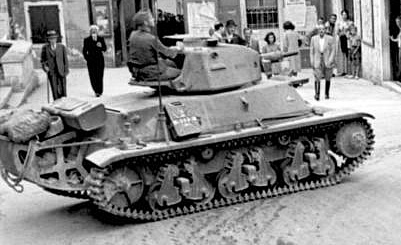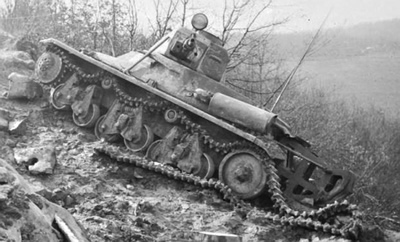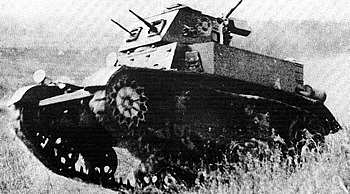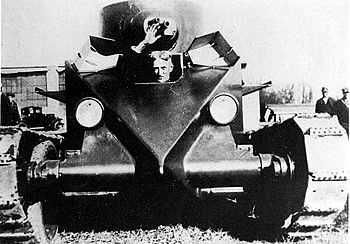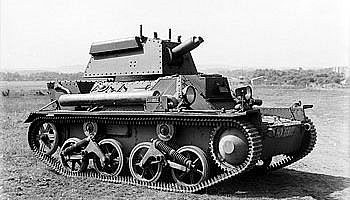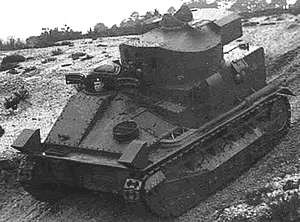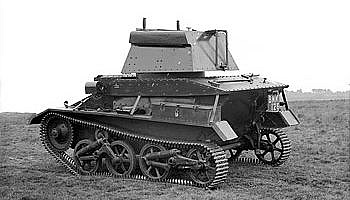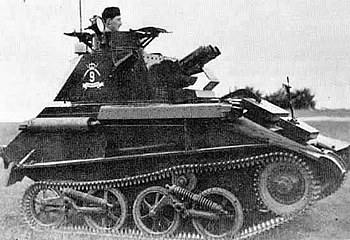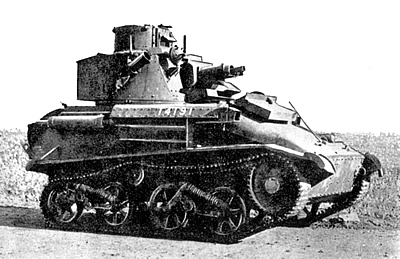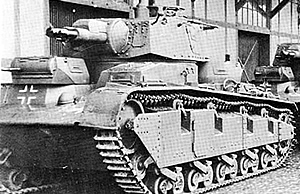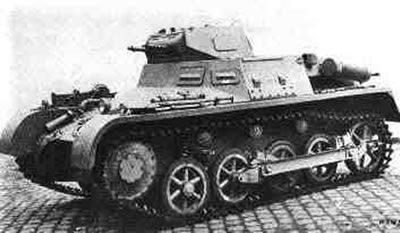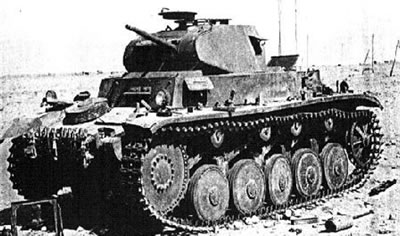The Hotchkiss H-35 light tank was designed in 1933 and was originally meant to be a light tank for the French cavalry. However, when it entered service in 1936, it was also put into use as an infantry support tank. About 400 Hotchkiss H-35 light tanks were produced. One fourth of these were assigned to …
Category Archives: Interwar Tanks
Hotchkiss H-39 Light Tank
The Hotchkiss H-39 Light Tank was the last tank in the Hotchkiss H series and the only tank in the series with a long-barreled main gun. The H-38, an interim version that was built after the H-35, had a better 120 hp petrol engine than the H-35, but it kept the H-35’s 1.46 inch (37 …
M1 and M2 Combat Cars
By the time World War II began in Europe, the United States had four kinds of light Armored Fighting Vehicles (AFVs). Two of these, Light Tanks M2A2 and M2A3, were used by the infantry, while the other two were used by the cavalry. The cavalry’s light AFVs were known as the M1 and M2 Combat …
M1931 Christie
The M1931 Christie tank was designed by J. Walter Christie, an American engineer who created some innovative tank designs. Christie invented the Christie suspension system, which allowed tanks to have a low center of gravity and a low silhouette and gave them the ability to move at high speeds. The Christie suspension system utilized a …
Mark II and Mark III Light Tanks
The Mark II and Mark III light tanks belonged to a series of light tanks (Mark I through Mark VI) that were developed by Vickers-Armstrong beginning in the mid-1930s. When the British first began developing medium and light tanks, beginning with the Whippet in World War I, they expected them to be used for breaking …
Mark II Medium Tank
Britain’s Mark II medium tank was two tons heavier than the Mark I medium tank, with a higher superstructure and thicker armor. The driver’s hood on the Mark II was moved from the front to the top of the hull. In the Mark II, the driver’s glacis (front plate) was steeper than on the Mark …
Mark IV Light Tank
Britain’s Mark IV light tank, which was developed by Vickers in the 1930s, was the first light tank in which the armored hull formed the chassis. Automotive parts were bolted onto the hull. Its design was based on that of experimental “Indian Pattern” armored vehicles by Vickers. The Mark IV had a longer hull than …
Mark V Light Tank
The Mark V light tank was the first light tank to have a turret that accommodated two men. This meant that the tank carried three crewmembers, while earlier British light tanks had only two crewmembers. In order for there to be enough room for the larger turret, as well as a turret ball race, the …
Mark VI Light Tank
The Mark VI light tank resembled the Mark V light tank. However, the Mark VI’s turret was redesigned to fit a radio. Production of the Mark VI Light Tank series began in 1936. When World War II began, one thousand of these tanks were in service The Mark VI formed a large part of the …
Neubaufahrzeuge V and VI
The Nazis were building tanks at a rapid pace in the interwar period. At first, they focused on building light and medium tanks. Then, between 1925 and 1933, the German companies Krupp, Rheinmetall-Borsig and Daimler-Benz built prototypes of a heavy tank, which weighed between 15 1/2 and 18 tons. The Nazis called it the Grosstraktor …
PzKpfw I Light Tank
The Treaty of Versailles, which was signed at the end of World War I, stated that Germany was not allowed to build tanks. The Nazis were able to get around this restriction by building an armored vehicle that didn’t have a turret or weapon system. It was called the PzKpfw I Ohne Aufbau (Ohne Aufbau …
PzKpfw II Light Tank
Germany’s PzKpfw Panzer II Light Tank weighed almost 10 tons. It had a 0.79 inch (2cm) cannon, which could fire armor piercing ammunition as well as high explosives, as well as a coaxial MG34 machine gun. It carried three crewmembers. Production of the PzKpfw II began in 1935. Different versions of the PzKpfw II were …
